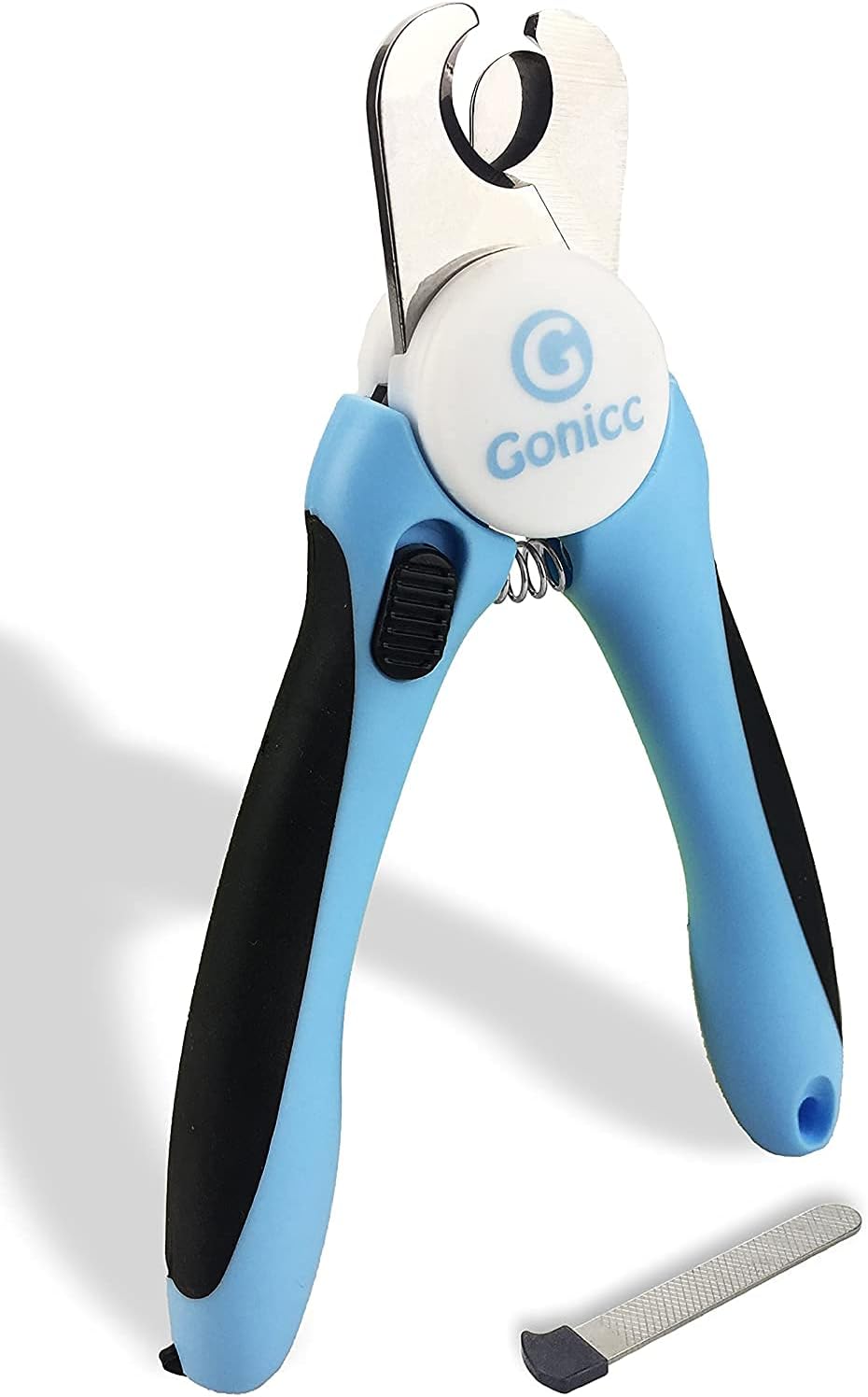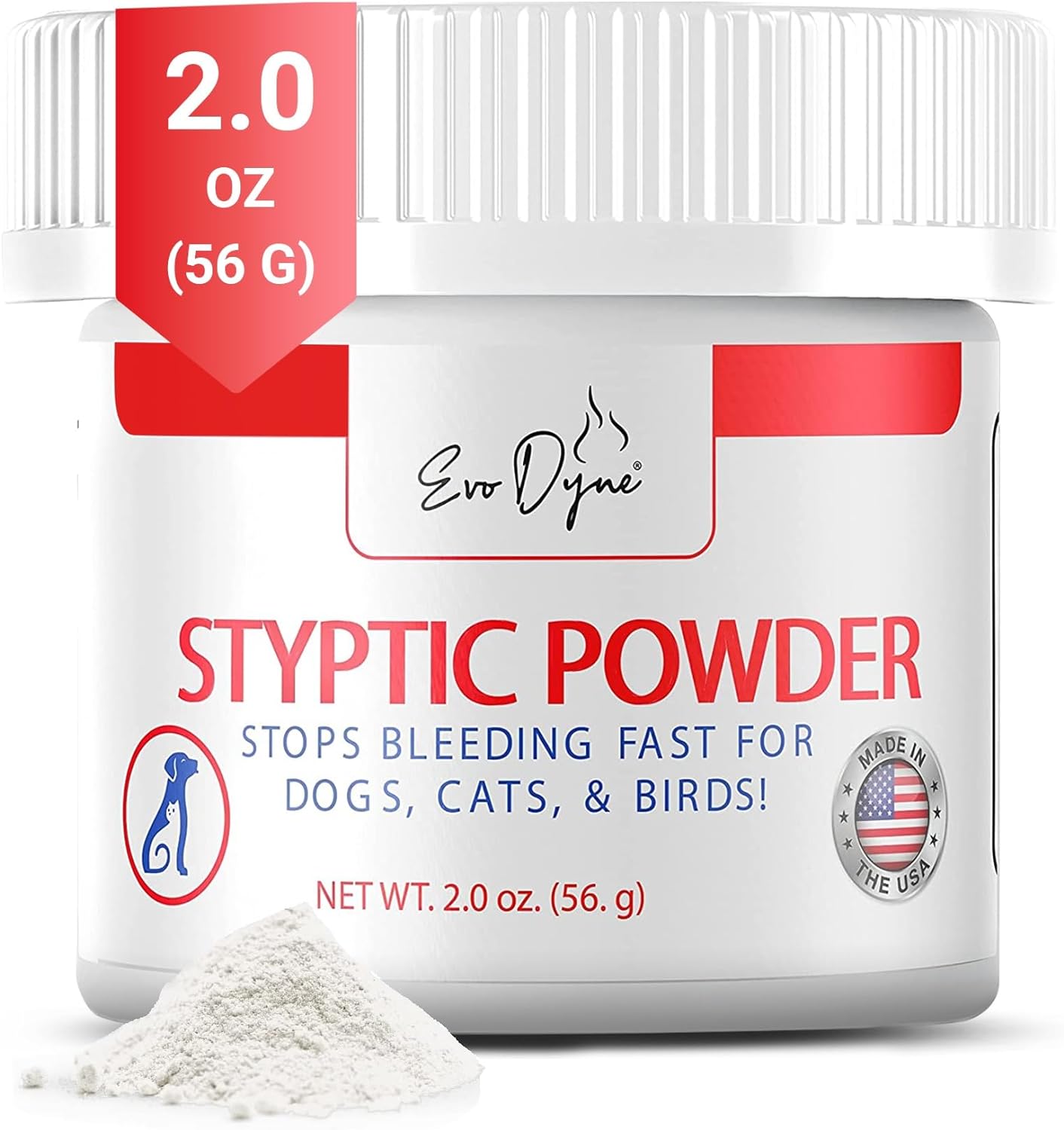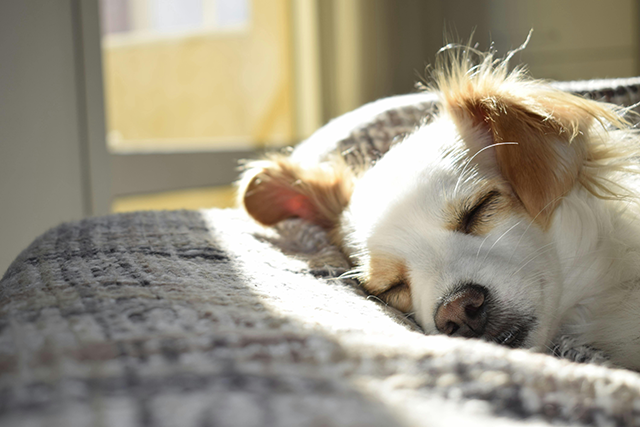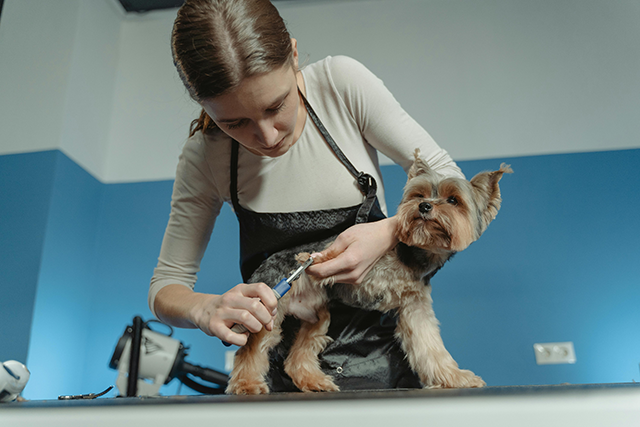Trimming your dog’s nails is an essential part of maintaining their overall health and well-being. Overgrown nails can cause discomfort and pain, making it difficult for your furry friend to walk or run properly. Regularly trimming their nails also prevents them from breaking or splitting, which can lead to infections.
Some dogs may be hesitant or even fearful when it comes to getting their nails trimmed, so it’s important to take things slow and make the experience as comfortable as possible for them.
Is it Necessary to Trim Dog Nails?
Yes, trimming your dog’s nails is absolutely necessary for several reasons. Firstly, it ensures their comfort and prevents the pain that comes from overgrown nails. When nails are too long, they can cause a dog’s toes to spread or twist unnaturally when walking, which can lead to a change in walking patterns and potentially contribute to joint pain or arthritis in the long run.
Furthermore, overgrown nails can get caught on carpets or other surfaces, risking injury or nail breakage, which can be painful and may require veterinary care to prevent infection. Regular nail trims help to maintain your dog’s posture and paw health, making it an indispensable part of their grooming routine.
Can I Trim My Dog’s Nails Myself?
Yes, it’s entirely possible to trim your dog’s nails by yourself, and doing so can be both a bonding experience and a way to save on grooming costs. However, it’s essential to proceed with caution and to be aware of the pros and cons before starting.
Pros
Bonding Time: Trimming your dog’s nails at home can foster trust and strengthen your bond. Regular grooming sessions become a time of closeness and comfort.
Cost-Effective: Trimming your dog’s nails yourself can save on professional grooming fees. This is especially beneficial if your dog needs frequent trims.
Convenience: You can choose the most appropriate time for both you and your dog, making it a less stressful experience. There’s no need to work around a groomer’s schedule or travel to a grooming salon.
Cons
Risk of Injury: Risk of Injury: Without proper knowledge and equipment, there’s a risk of cutting the nails too short and hitting them quickly, causing pain and bleeding.
Stress for the Dog: Some dogs may feel more anxious or scared about getting their nails trimmed by their owner, especially if the owner is nervous or inexperienced.
Learning Curve: It takes practice to become proficient at nail trimming. Initial attempts may be time-consuming and a bit frustrating until you and your dog get used to the process.
Given these considerations, it’s crucial to weigh the benefits against the potential downsides and decide what’s best for you and your pet. If you choose to proceed, ensure you educate yourself on the proper technique and invest in quality nail-trimming tools to make the process as smooth and comfortable as possible for your dog.
What is the Easiest Way to Trim Dog Nails?
Trimming your dog’s nails doesn’t have to be a dreaded task. With the right tools and approach, it can be a smooth process for both you and your furry friend. Here’s a step-by-step guide on how to easily trim your dog’s nails.
Materials Needed:
Dog Nail Clipper or Grinder – Recommended product: gonicc Dog & Cat Pets Nail Clippers and Trimmers. Features include a safety guard to avoid overcutting, a free nail file, razor-sharp blade, ergonomic non-slip handles, and a safety stop blade to reduce risks. The clipper comes with antirust oil coating for blade protection. Available on Amazon for $15.95 for large and medium-sized dogs.
Styptic Powder – Recommended product: Styptic Powder by Evo Dyne. A fast-acting blood stop powder for quick bleeding control, made with pet-safe ingredients. Available on Amazon for $14.98.
Dog Treats – Recommended product: Milk-Bone Soft & Chewy Dog Treats, Beef & Filet Mignon Recipe, 25 Ounce. These treats are great for rewarding your dog after trimming. Available on Amazon for $13.76.
Steps
Prepare Your Dog: Start by calming your dog. You can do this by petting or playing with it until it feels relaxed. Keeping dog treats nearby can also help to make the experience more positive.
Get Your Tools Ready: Have the gonicc Dog & Cat Pets Nail Clippers and Trimmers at hand. Ensure the safety guard is in place to avoid cutting too much of the nail. Open the nail clipper and ensure it’s clean and free from the antirust oil coating.
Hold Your Dog’s Paw Firmly but Gently: Grip one of your dog’s paws and press lightly on a toe to extend the nail. To keep your pet calm, speak to them in a calm and reassuring voice throughout the process.
Start Clipping: Using the gonicc clipper, cut the tip of the nail at a 45-degree angle, making sure you avoid the quick (a vein that runs into the nail). If your dog has clear or light-colored nails, the quick is the pink region. For dogs with dark nails, clip small amounts at a time to avoid accidentally cutting them quickly.
Use the Styptic Powder if Necessary: If you accidentally cut into the quick and cause bleeding, don’t panic. Apply a small amount of the Evo Dyne Styptic Powder to the affected nail to stop the bleeding quickly.
Reward Your Dog: After successfully trimming the nails, generously reward your dog with Milk-Bone Soft & Chewy Dog Treats to make them associate nail trimming with a positive outcome.
Repeat as Necessary: Depending on how fast your dog’s nails grow, you may need to repeat this process every few weeks to keep their nails at a healthy length.
By following these steps and using the recommended products, you can ensure a safe and stress-free nail-trimming experience for your dog.
What to Do If Your Dog Won’t Let You Cut Their Nails?
If your dog becomes anxious or refuses to allow you to trim their nails, it’s crucial to approach the situation with patience and understanding. Gradually desensitizing your dog to the sensation of having their paws and nails touched can help make nail trimming less stressful. Begin by gently handling your dog’s paws regularly without attempting to trim the nails. Reward your dog with treats and praise to create a positive association with having their paws touched. You might also simulate the trimming process by softly pressing the clipper handle around their nails without actually clipping.
If progress is slow or your dog remains fearful, consider seeking assistance from a professional groomer or a veterinarian. Sometimes, having the procedure done by an experienced professional in a calm, reassuring environment can ease a dog’s anxiety over time. In more extreme cases, a vet may recommend mild sedation to safely trim the nails without causing stress to your dog. Remember, the goal is to ensure the well-being and comfort of your pet with as little stress as possible for both of you.
How Often Should I Cut My Dog’s Nails?
The frequency at which you should trim your dog’s nails depends on several factors, including their level of physical activity, the surfaces they walk on regularly, and their breed. Generally, a dog’s nails should be trimmed every 3-4 weeks. However, dogs that spend a lot of time on soft surfaces like grass may require more frequent trimming, as their nails won’t naturally wear down as much as dogs who walk on hard surfaces such as sidewalks.
Conversely, if you often hear your dog’s nails clicking on the floor as they walk, it’s a clear sign that a trim is overdue. Regularly checking your dog’s nails and being mindful of their lifestyle will help you establish a trimming schedule that keeps their nails at a healthy length, ensuring their comfort and preventing related injuries.
Ensuring Comfort and Safety Through Nail Care
In conclusion, maintaining your dog’s nail length through regular trimming is essential for their comfort, mobility, and overall health. You can make nail trimming a stress-free task by following the step-by-step guide provided, using the recommended tools, and understanding your dog’s behavior and needs.
Patience, positive reinforcement, and consistency are vital to acclimate your dog to essential grooming. Whether you opt for at-home nail trimming or professional assistance, the primary aim remains to ensure your beloved furry companion is content, in good health and prepared for their next escapade.
Jessica is a veterinary medicine student who is passionate about animals. Living with her cherished dog, Milo, deepens her understanding of the human-animal connection, enhancing her empathy as a future veterinarian.
Jessica’s concise articles reflect her dedication to improving the lives of animals and those who care for them, making her an inspiring figure in the pet care field.







